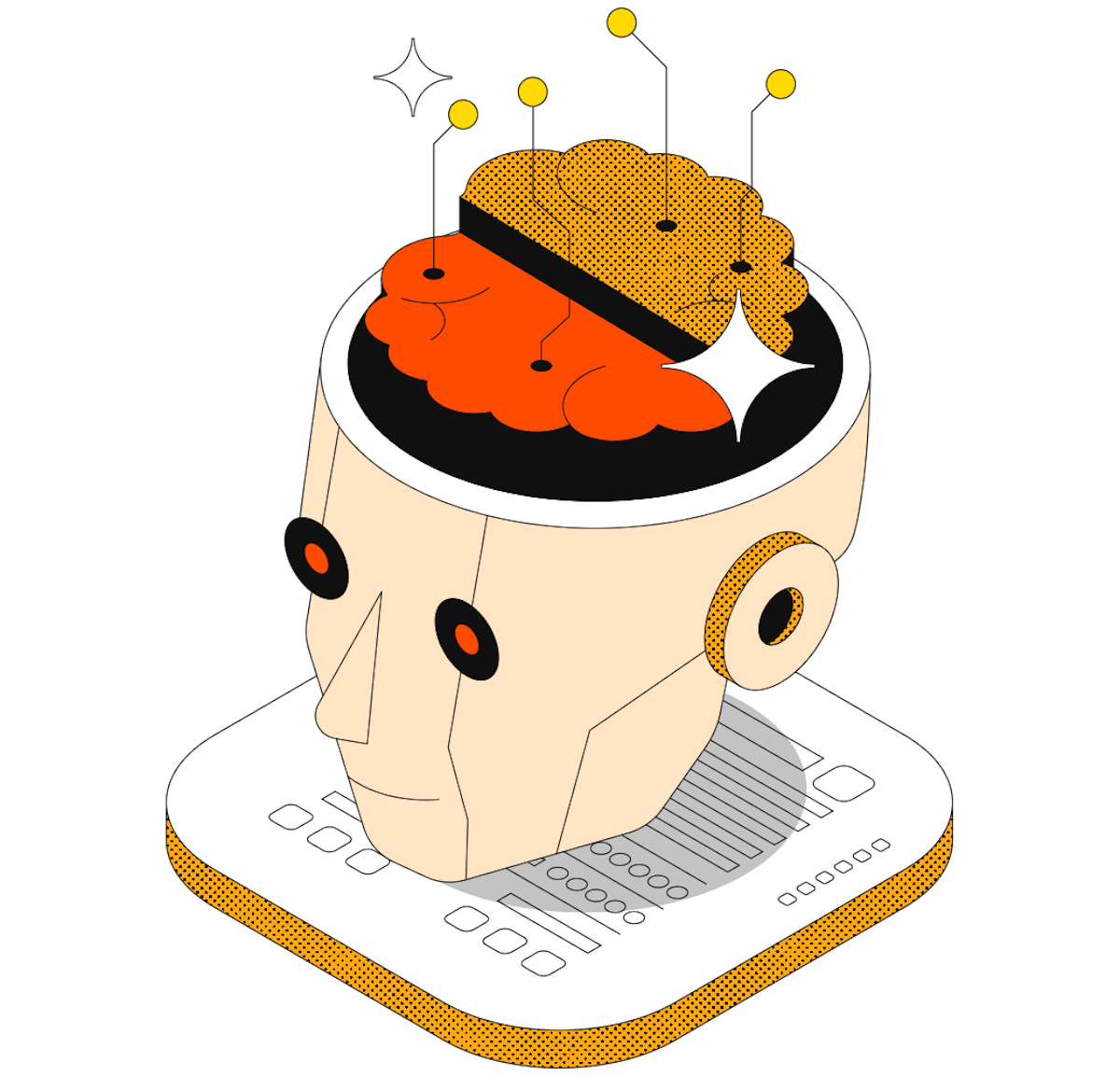Why you should think about AI as an intern
With the right guidance, AI can serve as a game-changing resource for your team.


Katy Turner
Product Marketing Manager for AI at Coda
Blog > AI · 5 min read
AI is a game-changing resource
Interns and AI: What value do they bring?
- Increase team bandwidth. Both interns and AI can take time-consuming, manual tasks off a team’s plate, freeing them up to focus on more strategic projects. They can also help with projects that would otherwise sit on the back burner due to a lack of resources.
- Fill a skills gap. Interns may bring skill sets a team is lacking , while AI can accentuate a team’s capacity with a specific set of skills, such as content generation and information analysis.
- Bring unbiased perspective. Interns are often unfamiliar with the company culture, internal dynamics, or existing processes, which means they can bring an unbiased and fresh perspective to the team. While AI may not bring original “fresh ideas” like a person does, it is still a blank slate in a sense. Without a sense of organizational history or context, AI can provide your team with new perspectives or different directions to consider. For example, if you prompt an AI tool for product taglines, it doesn’t know what kind of taglines you’ve used before.
AI is a game-changing resource
How to incorporate your AI “intern” into your workflows
1. Where do you want to allocate this resource?
Think about where you’re getting stuck in your workflow, dreading a to-do list item, or saying, “I’ll get to that tomorrow.” Can you outsource any of these tasks or projects? For example, I used to spend an hour or two every day combing through my call notes. Now, I use Coda AI to summarize calls and meetings, including highlighting key takeaways, pulling out action items, generating internal and external follow-ups, and putting together agendas for our next call.2. Are there projects you want to do, but can’t start or complete without additional resources?
Every team has big picture projects they want to tackle. Maybe it’s researching a new market, refreshing your website copy, or auditing your company blog. Are there any tasks AI could assist with to get these projects off the ground? Are there projects currently stalled that need an additional lift? What projects might not otherwise get finished? My team has used AI to help update our internal company knowledge base with common FAQs.3. How do we want to manage this resource?
When you hire an intern, they typically have 1-2 managers within an organization. While AI is a limitless resource that people can use simultaneously, it’s still important for a team to understand what each other person is working on. Since using AI to complete work is still relatively new, individual employees often start using it without first talking to their teammates about how they’re engaging it. Instead, approach AI as a collective resource and share ideas about how it could help everyone on your team. If you’re operating in silos, AI won’t speak up about being given the same task twice or offer examples of what else it can do.4. Where are we getting stuck creatively?
When you find yourself in a creative rut, staring at a blinking cursor on a blank page rarely leads to inspiration. AI can generate something for you to respond to instead. Since AI doesn’t have institutional knowledge about how things have traditionally been done at your company, it may offer you a new way of approaching your work. For example, I’ve used AI to generate taglines for products. It’s helped me come up with new ways of thinking about how to explain and position certain features. While you shouldn’t rely on AI alone for creativity, you can think of it as a source for endless creative prompts.5. What are our goals?
How do you know if you’re using AI effectively? When you hire an intern, you come up with a way to evaluate their performance. The same should be done for AI. If your team has access to AI and aren’t using it—or they have no way of measuring how much, and in what ways they’re using it—then you’re letting an incredible resource go to waste. Consider your goals for using AI, such as reducing time spent on emails or summarizing meeting notes, and then check in regularly to see if it’s helping achieve those goals. If not, it may be time to reevaluate your goals or invest in more employee training around the tool.AI is a game-changing resource
How to get the best work from your AI “intern”

Using clear, detailed prompts to generate better sales emails with AI
- Provide more detail. Assume you need to include more details than you think you do. The more specific you are upfront, the less time you’ll spend editing your AI-generated output later.
- Be ready to iterate. Depending on your prompt, AI can generate a response in a matter of seconds. Even if you provided a substantial amount of detail, be prepared to iterate as you get used to using AI; it won’t be perfect the first time.
- Take results as a rough draft. You don’t necessarily have to use AI’s output verbatim; you will likely want to add your own personal voice or perspective depending on the project.
- Try a different perspective. Try experimenting with asking AI to generate content in a different tone, perspective, or format. You can prompt AI to rewrite paragraphs as bullets or ask it to make an email more casual. (I’ve even asked it to write my weekly sales email in the voice of Dolly Parton).
AI is a game-changing resource












